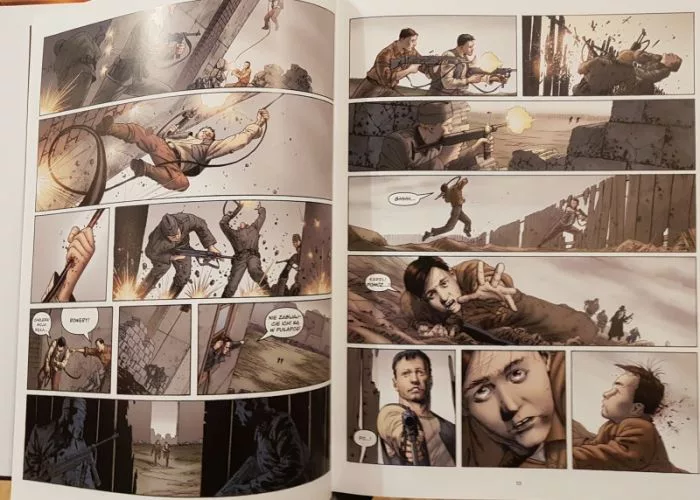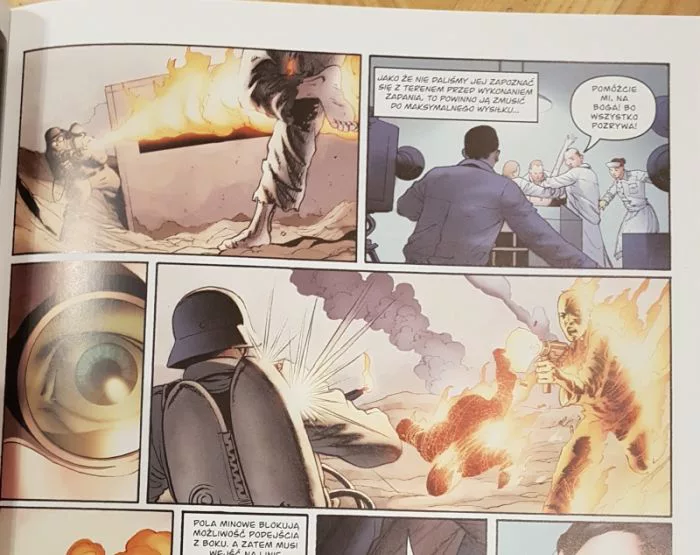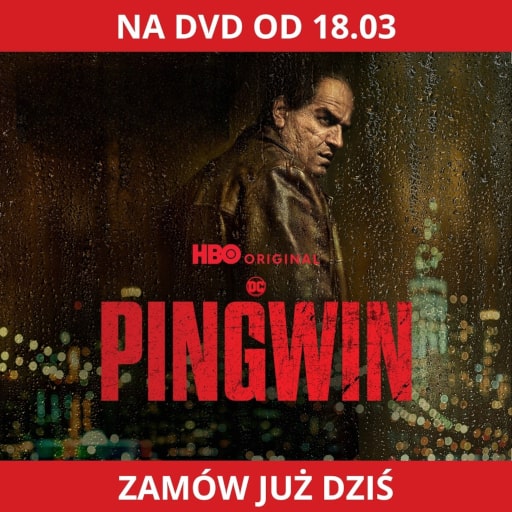The Nazi love of occultism has been rolled over by pop culture for years. Among the mass of titles using the mystical wunderwaffe theme, Fabien Nury's comic book proves that not everything has been said yet.
The story presented in the comic is multi-threaded, filled with lots of characters and taking place simultaneously in several arenas. The axis of intrigue is a very unusual approach to vampirism. There are no archetypal items such as crosses, coffins, pegs or garlic. There is also no turning into bats or fear of sunlight. In fact, the supernatural creatures from the comic book cannot even be described as bloodsuckers, because this motif does not appear at all.
Nury offers a different, more original view, in which the strigoi are immortal creatures that transfer from body to body by means of blood. When one shell is fatally wounded or ages, another “host” is searched for. This cannot be described as a completely innovative idea – changing human shells by a supernatural being has already appeared in such films as: In the Web of evil (with a fallen angel as the torturer) or Hidden(here, in turn, the identity thief is an alien), although I have never encountered a combination of this theme with vampires. Additionally, blood-loving monsters are something special for the world presented. There is no room for an army of monsters here, there are only two creatures of this type appearing through all pages of the comic: Vlad Dracula and his brother Radu.

Bad Blood
So where did the title Legion come from ? Well, these siblings have the ability to “infect” several people at once, which the Nazis are carefully planning to take advantage of. Thanks to Radu, a powerful army of drones is to be created, connected by one mind and ignoring the wounds suffered in combat. Smaczku is added by the fact that the main body for a vampire collaborating with Germany is a little girl. In this way, Nury uses a trope typical of horror movies, in which an innocent child, it would seem, is also a being from hell. The story of Brother Vlad is also interesting because it has the most personal dimension. At the same time, we watch the drama of parents who know that their child is no longer himself and the behavior of neighbors from a nearby village, who are afraid of mythical strigoi .
This is one face of the conflict. The Romanian resistance movement, the English spy network (with a poorly written investigation, because the reader knows all the secrets from the heroes), as well as Dracula himself, who in various forms tries to track down his brother, are trying to oppose the plans for the conquest of the world. At the same time, there is a conflict on the German side between commanders who have completely different (and hidden) ambitions and goals. Overloading with threads causes an interesting starting point to get lost in the multitude of numerous side stories. Lots of characters are introduced and named by name to drop without much impact on the storyline. The vampires, on the other hand, only seem to be making a guest appearance, rather than playing the main role in the story. The climax itself is also a problem: too modest and therefore not satisfactory. I have a feeling,

Transatlantyk
While bloodsuckers during World War II are not a frequent topic, cooperation between authors from the USA and Europe is even less typical. Although major publishing houses such as DC and Marvel use the services of artists from all over the world, it is very rare for a European title to be created in collaboration with a cartoonist from another continent. The reviewed comic is one of such exceptions, as the French screenwriter was supported by John Cassaday in terms of graphics. For his work, he even earned a comic Oscar, i.e. the Eisner Award. But his style, which has won the approval of the chapter, is something that does not suit my taste at all. I will not deny him technical proficiency, although I cannot consider this aspect in terms of advantages or disadvantages. Especially that photorealistic and meticulously rendered faces are juxtaposed with empty backgrounds.
This release of OMG deserves praise. Earlier I had to deal with the version published on the US market (bought from Kasia from OMG) and … it is far from the quality that the Polish reader receives. The American version had a soft cover and a poor translation (even Germans say Scheiss instead of Scheisse ). Meanwhile, in Poland, Jam is Legion has a hardcover, high-quality paper, a preface and afterword.

Vampires without teeth
Most of the Francophone titles I dealt with were middle-class comics for me – neither poor nor outstanding. I Am Legion will not change my approach. Fabien Nury created a solid foundation for his work, which he later changed into small ones by overloading with heroes and plot threads. It is still a solid item for fans of horror and pop culture occultism, although much more could be drawn from this topic.

